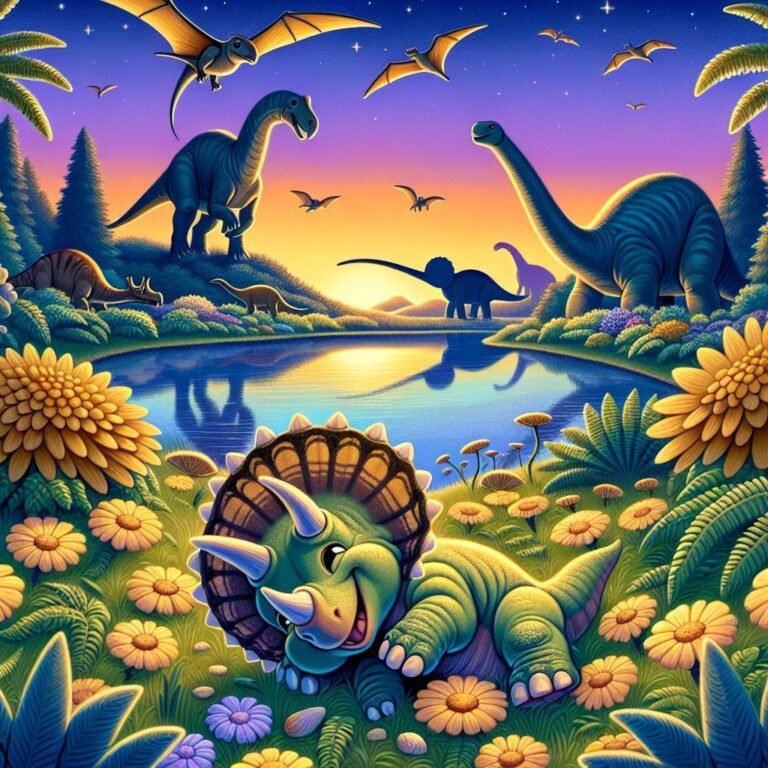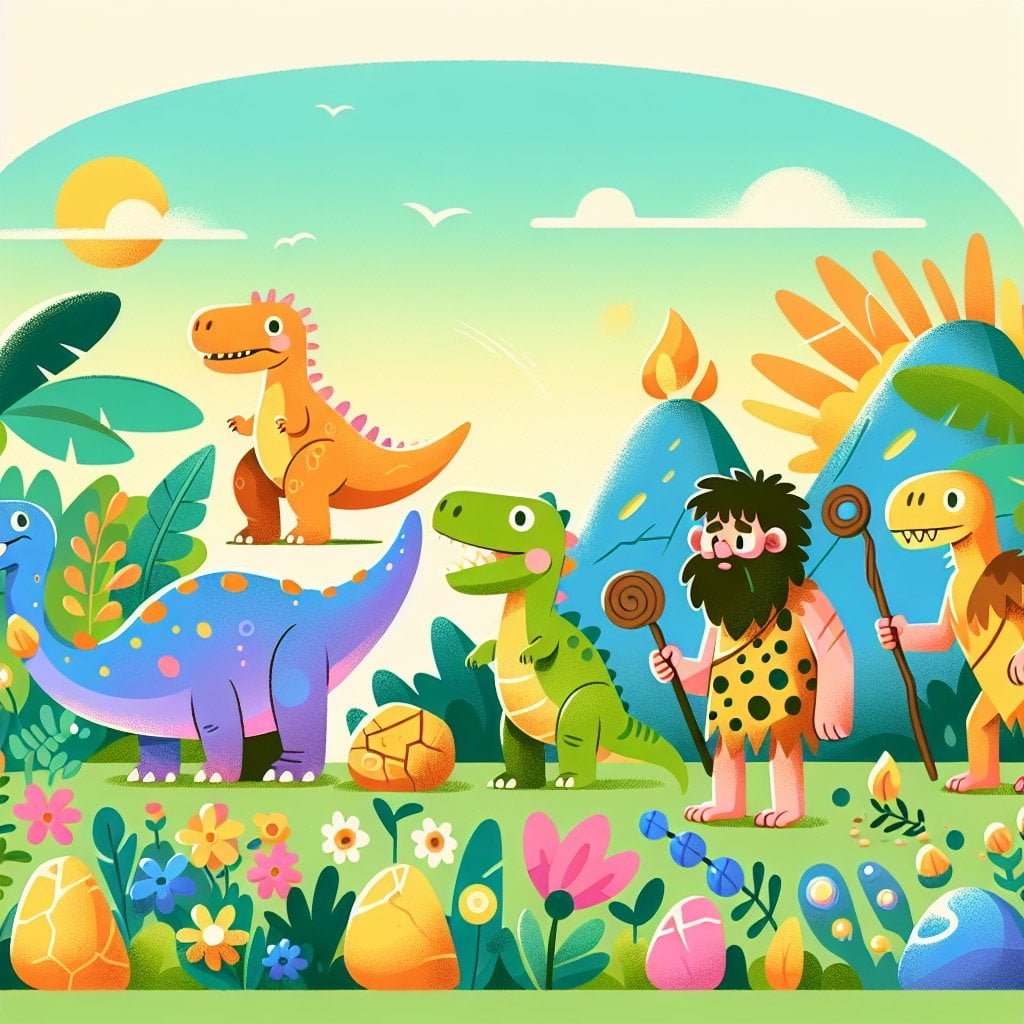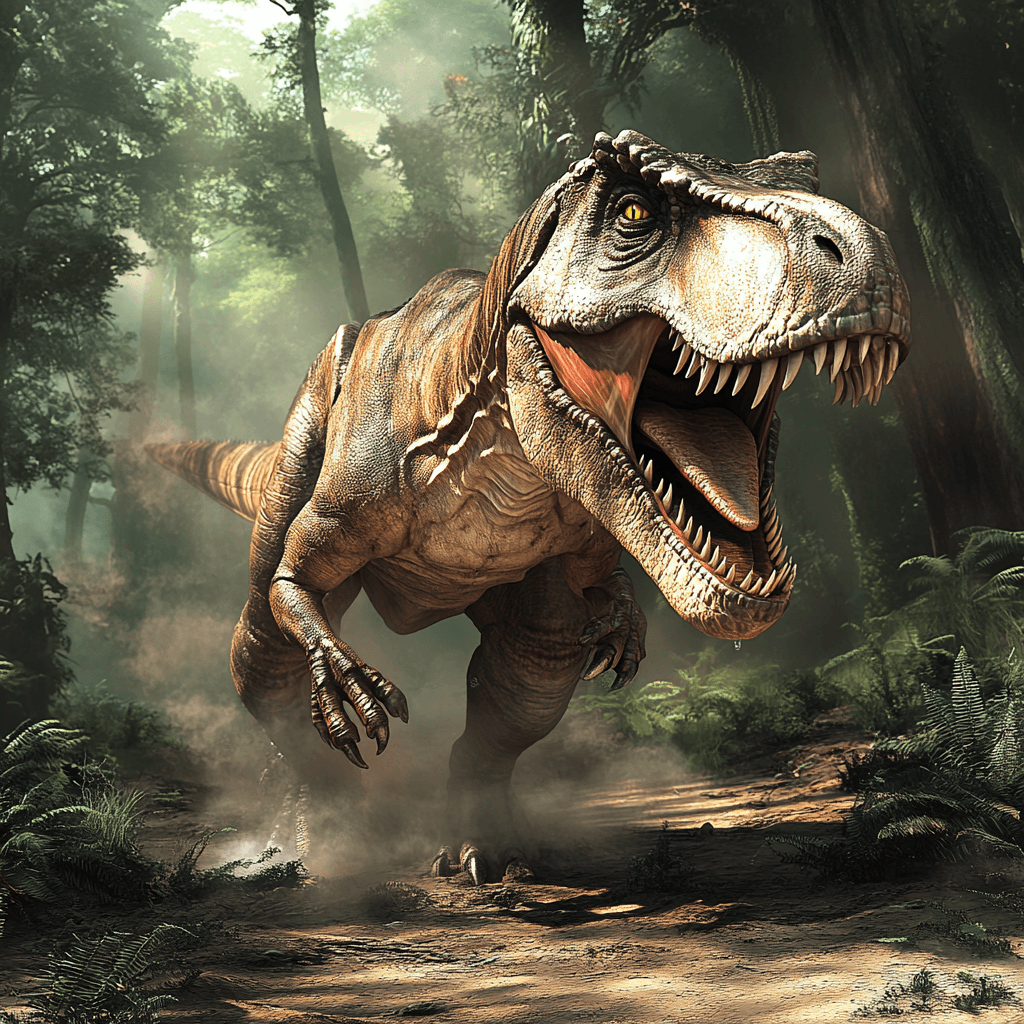Welcome to a world filled with fascinating **Fun Facts for Kids About Giant Dinosaurs**! If you’re curious about these colossal creatures that once roamed the Earth millions of years ago, get ready to embark on an exciting journey of discovery. From the incredible size of the largest dinosaurs to the surprising adaptations of feathered species, there’s so much to learn and explore in the world of Giant Dinosaurs. Imagine standing next to a dinosaur longer than 6 school buses lined up end to end or marvel at the fact that some dinosaurs had teeth the size of bananas! These fun facts will ignite your imagination and curiosity, revealing the diversity and wonder of the prehistoric world. So join us as we uncover the fascinating world of Giant Dinosaurs and ignite your passion for learning and exploration!
Fun Facts for Kids About Giant Dinosaurs
1. The Largest Dinosaur Was Longer Than 6 School Buses
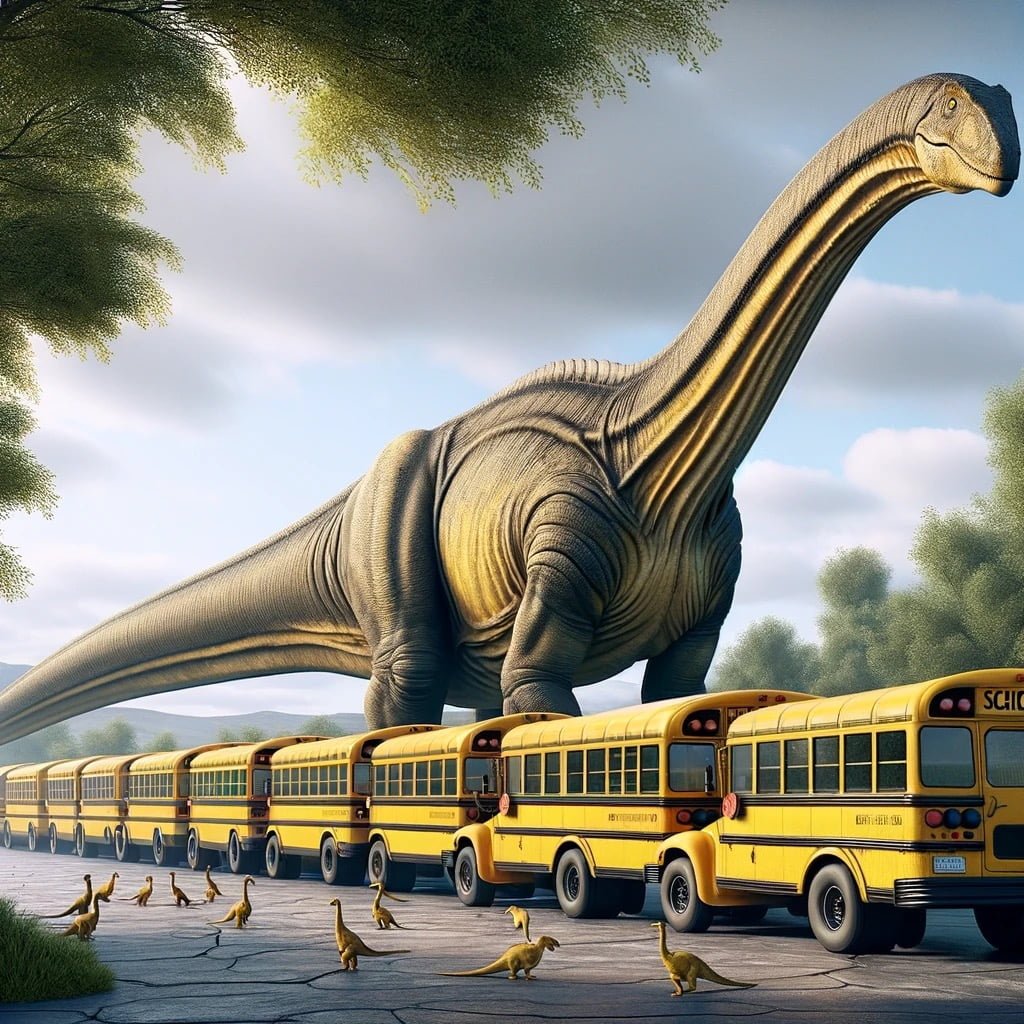
For younger kids: The biggest dinosaur was so long, it could stretch over 6 school buses lined up in a row!
For older kids: The Argentinosaurus, the heaviest dinosaur ever discovered, along with other long-necked sauropods, reached lengths of over 100 feet—around the same as 6 school buses end to end! Their massive size allowed them to reach the tallest trees and plants.
Detailed explanation:Dinosaurs have always captured the imagination of both children and adults alike, and one of the most fascinating aspects of these prehistoric creatures is their sheer size. In fact, the largest dinosaur to have ever lived was longer than six school buses put end to end!
This gigantic dinosaur, known as Argentinosaurus, roamed the earth during the Late Cretaceous period, approximately 94 to 97 million years ago. This massive creature belonged to a group of dinosaurs known as sauropods, which were characterized by their long necks, small heads, and massive bodies supported by four sturdy legs. Argentinosaurus is estimated to have been around 100 feet in length and weighed as much as 100 tons, making it one of the largest land animals to have ever lived.
To put this incredible size into perspective, imagine standing next to a school bus and then picturing six of them lined up in a row. That is how long Argentinosaurus was! This fun fact about giant dinosaurs not only showcases the immense size and scale of these incredible creatures but also provides a sense of wonder and amazement at the diversity of life that once existed on our planet.
Learning about giant dinosaurs like Argentinosaurus can be both educational and entertaining for kids, sparking their curiosity about the natural world and the fascinating creatures that lived millions of years ago. By sharing fun facts about giant dinosaurs, we can inspire a love of science and paleontology in young minds, encouraging them to explore the wonders of the ancient world.
Fun Facts for Kids About Giant Dinosaurs
2. Dinosaurs Lived on Earth for Over 165 Million Years
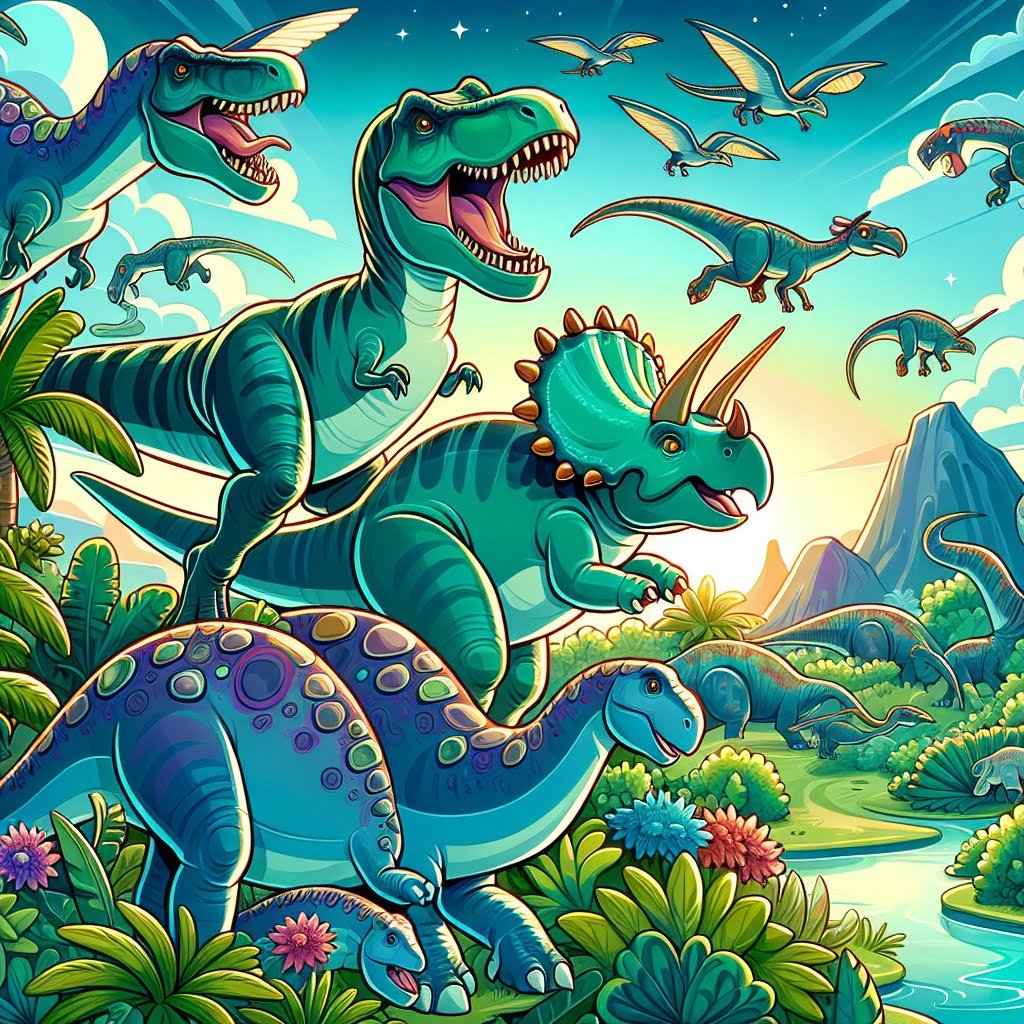
For younger kids: Dinosaurs were around for a super long time—much longer than even your grandparents!
For older kids: The reign of the dinosaurs lasted from the Late Triassic period, around 230 million years ago, until the end of the Cretaceous period, about 65 million years ago. During this time, they evolved into an incredible array of shapes and sizes, ruling the planet for over 165 million years.
Detailed explanation:One of the most fascinating and exciting Fun Facts for Kids About Giant Dinosaurs is that these incredible creatures roamed the Earth for over 165 million years. This mind-blowing timespan is a testament to the dominance and adaptability of dinosaurs in the prehistoric world.
The era of the dinosaurs, known as the Mesozoic Era, began approximately 252 million years ago and lasted until the mass extinction event that occurred around 66 million years ago. During this time, dinosaurs evolved into a diverse range of species, including massive herbivores like the Brachiosaurus and fearsome carnivores like the T. rex.
The longevity of the dinosaur reign can be attributed to their remarkable ability to adapt to different environmental conditions and ecological niches. From the swamps of the Jurassic period to the arid deserts of the Cretaceous period, dinosaurs thrived in various habitats across the globe.
Additionally, the evolution of new anatomical features, such as feathers for flight or armor for protection, allowed dinosaurs to exploit new food sources and defend themselves against predators. This constant innovation and diversification ensured their survival for millions of years.
The discovery of dinosaur fossils and the ongoing research in paleontology continue to provide valuable insights into the lives of these magnificent creatures. By studying their fossils and reconstructing their behaviors, scientists can piece together the puzzle of dinosaur evolution and unravel the mysteries of the ancient world.
In conclusion, the fact that dinosaurs lived on Earth for over 165 million years is not only a testament to their resilience and adaptability but also a captivating story of one of the most successful groups of animals in Earth’s history. Fun Facts for Kids About Giant Dinosaurs are truly awe-inspiring and continue to ignite the imagination of young and old alike.
Fun Facts for Kids About Giant Dinosaurs
3. The T-Rex Had Teeth the Size of Bananas
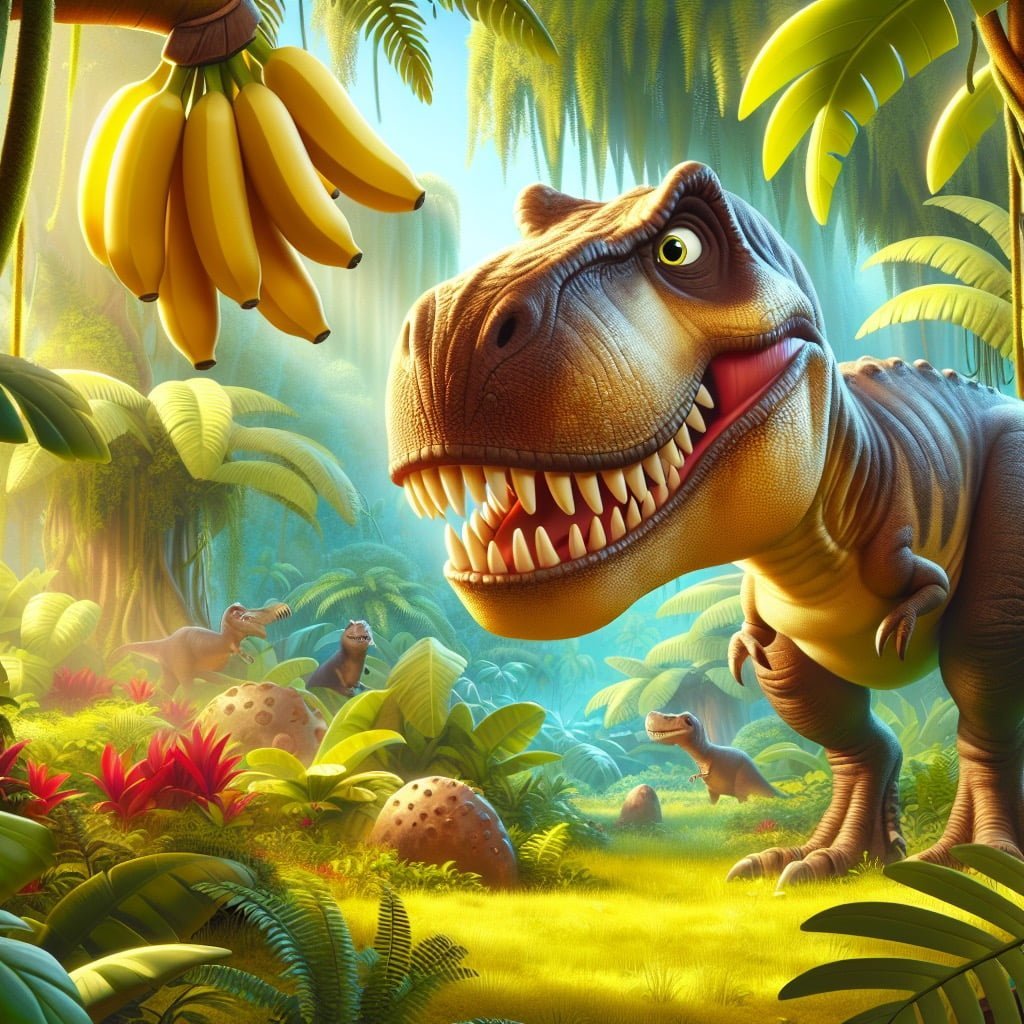
For younger kids: The T-Rex had teeth as big as bananas that it used to munch on its favorite snacks!
For older kids: The Tyrannosaurus Rex had massive teeth that could measure up to 12 inches long, with a bite force strong enough to crush bone. It used its fearsome teeth to tear flesh and feast on its prey.
Detailed explanation:One of the most fascinating and fun facts for kids about giant dinosaurs is that the T-Rex had teeth the size of bananas. These massive teeth played a crucial role in the T-Rex’s predatory lifestyle, allowing it to easily tear through flesh and bone.
The T-Rex was one of the largest carnivorous dinosaurs to ever roam the Earth, standing at an impressive height of up to 20 feet and weighing as much as 9 tons. Its intimidating size, combined with its razor-sharp teeth, made it a formidable predator during the late Cretaceous period.
The T-Rex’s teeth were not only large, but they were also serrated, similar to steak knives. This serration allowed the T-Rex to effectively slice through the tough hides of its prey, making it easier to consume. In fact, some researchers believe that the T-Rex could deliver a bite force of up to 8,000 pounds, easily crushing bones and tearing flesh.
Despite their size, the T-Rex’s teeth were not necessarily used for chewing. Instead, the T-Rex would typically swallow large chunks of meat whole, relying on its powerful digestive system to break down and extract nutrients from its food.
In conclusion, the T-Rex’s teeth the size of bananas were a key adaptation that allowed it to thrive as a top predator in its ecosystem. By using its massive teeth to efficiently hunt and consume prey, the T-Rex was able to maintain its dominance as one of the largest and most fearsome dinosaurs of all time.
Fun Facts for Kids About Giant Dinosaurs
4. Dinosaurs Could Lay Eggs the Size of Soccer Balls
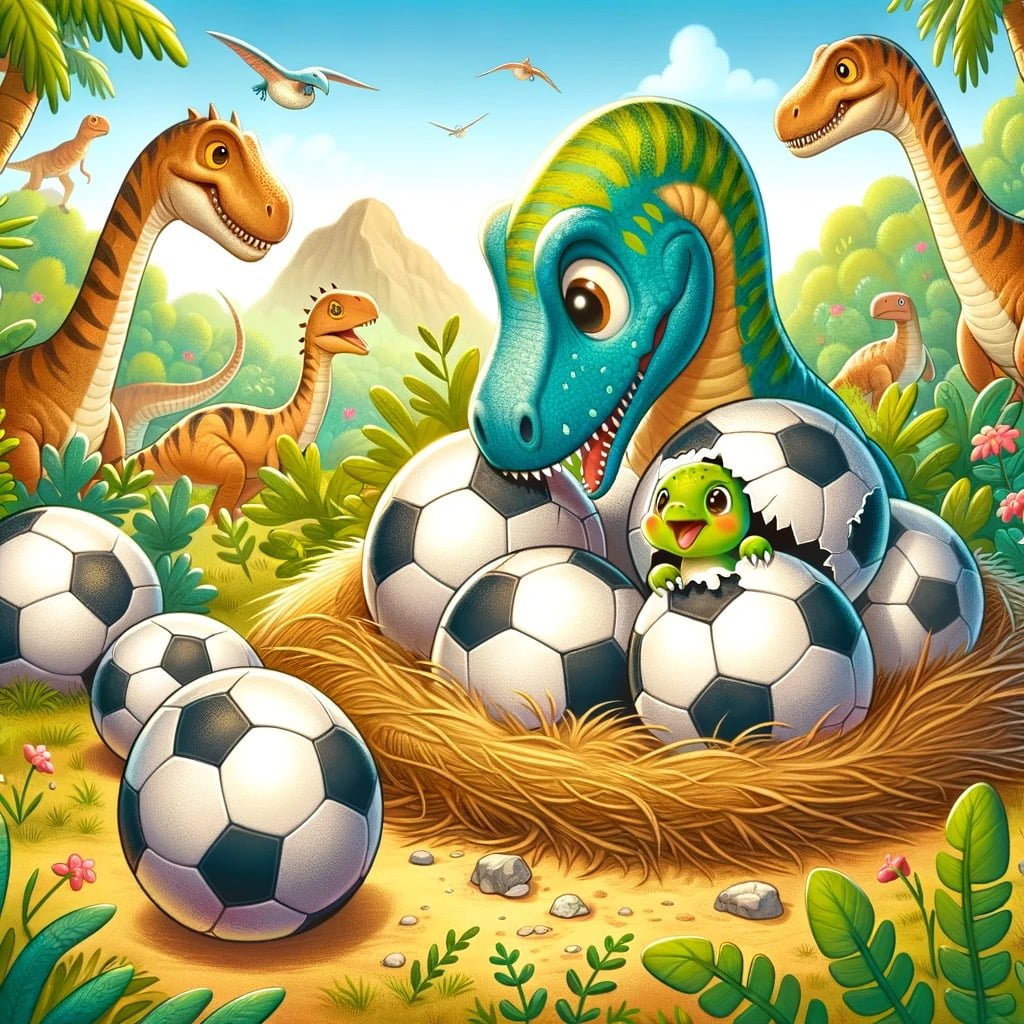
For younger kids: Some dinosaurs could lay eggs as big as soccer balls that hatched into baby dinosaurs!
For older kids: The largest dinosaur eggs, belonging to the long-necked sauropod dinosaurs, could be as large as soccer balls—imagine little baby dinosaurs hatching from such huge eggs!
Detailed explanation:Dinosaurs have always fascinated both children and adults alike, with their massive size and unique characteristics. One interesting fact about dinosaurs is that they were capable of laying eggs the size of soccer balls. This incredible feat is not only impressive in terms of the size of the eggs, but also in the sheer volume of eggs that some species were able to lay.
The ability of dinosaurs to lay such large eggs is a result of their evolutionary adaptations. In order to support the growth of large and heavy offspring, dinosaurs evolved to produce eggs that were much larger than those of modern-day birds. The reproductive habits of dinosaurs varied among different species, with some laying a few large eggs and others laying numerous smaller eggs.
For kids who are fascinated by giant dinosaurs, learning about their egg-laying capabilities can be a fun and exciting way to explore the world of these prehistoric creatures. Imagine the sight of a massive dinosaur nest filled with eggs the size of soccer balls, waiting to hatch and bring new life into the world. This visual can spark the imagination and curiosity of young minds, encouraging them to delve deeper into the world of paleontology.
In conclusion, the fact that dinosaurs could lay eggs the size of soccer balls is just one example of the incredible diversity and uniqueness of these ancient creatures. By sharing fun facts like these with children, we can inspire a lifelong love of science and exploration in the next generation.
Fun Facts for Kids About Giant Dinosaurs
5. The Stegosaurus Had Plates Along its Back for Temperature Regulation
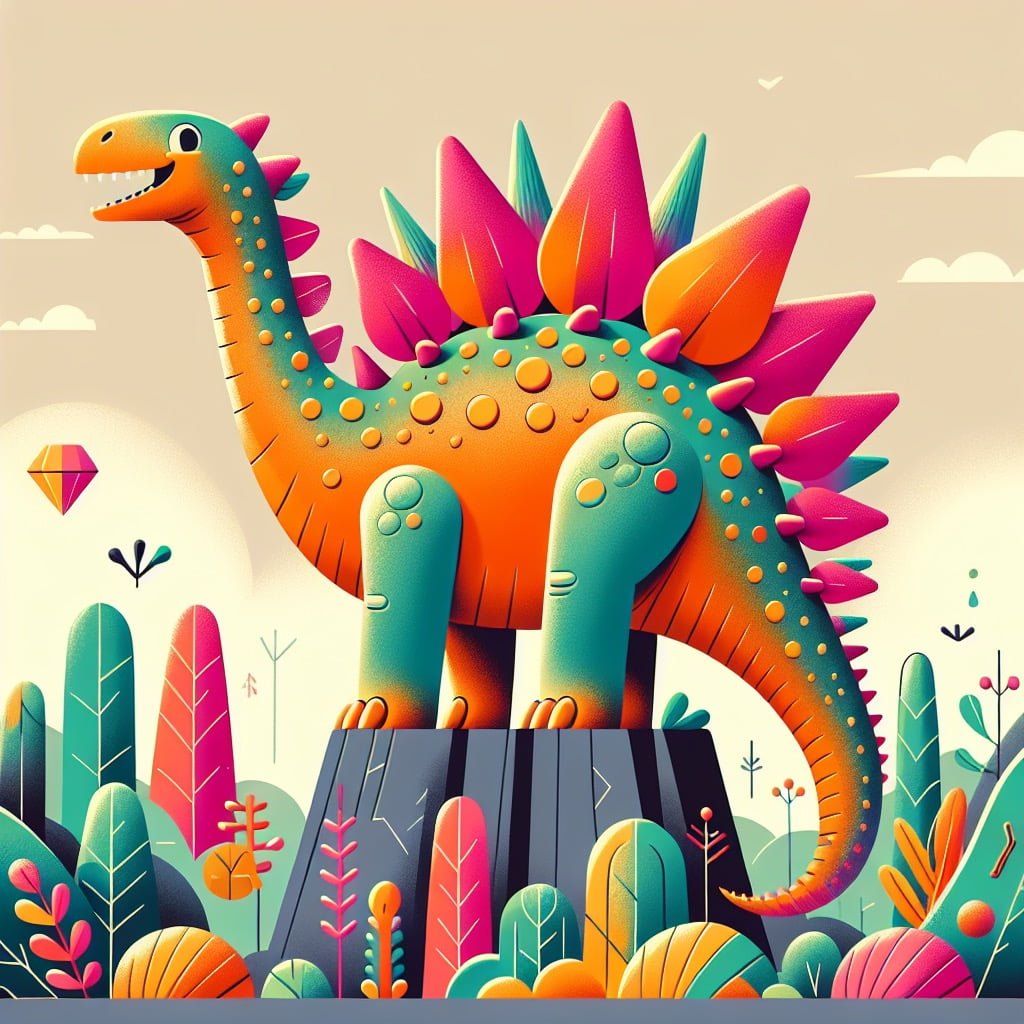
For younger kids: The Stegosaurus had really cool plates on its back that helped it stay comfortable!
For older kids: The bony plates on the back of the Stegosaurus were likely used to regulate body temperature. They could flush with blood when the dinosaur was too hot, and paleontologists believe they might have been brightly colored to attract mates.
Detailed explanation:One of the most fascinating fun facts for kids about giant dinosaurs is that the Stegosaurus had plates along its back for temperature regulation. These plates, known as osteoderms, were made of bone and were lined up in two rows along the Stegosaurus’ back. While many people believe that these plates were used for protection against predators, recent research suggests that their main function was actually to help the dinosaur regulate its body temperature.
The Stegosaurus lived during the late Jurassic period, around 155 to 150 million years ago. During this time, the Earth was much warmer than it is today, and the Stegosaurus needed a way to keep cool. The plates on its back were covered in blood vessels, which would have allowed the dinosaur to absorb heat from the sun when it needed to warm up, and release heat when it needed to cool down. This process is known as thermoregulation, and is similar to how a radiator works in a car.
In addition to helping with temperature regulation, the plates on the Stegosaurus may have also been used for display purposes. Some scientists believe that the plates could have been brightly colored, and that the dinosaur could have flushed the plates with blood to attract mates or intimidate rivals. Overall, the presence of these plates on the Stegosaurus’ back is a fascinating example of how dinosaurs adapted to their environments in unique and innovative ways.
Fun Facts for Kids About Giant Dinosaurs
6. Velociraptors Were About the Size of Turkeys
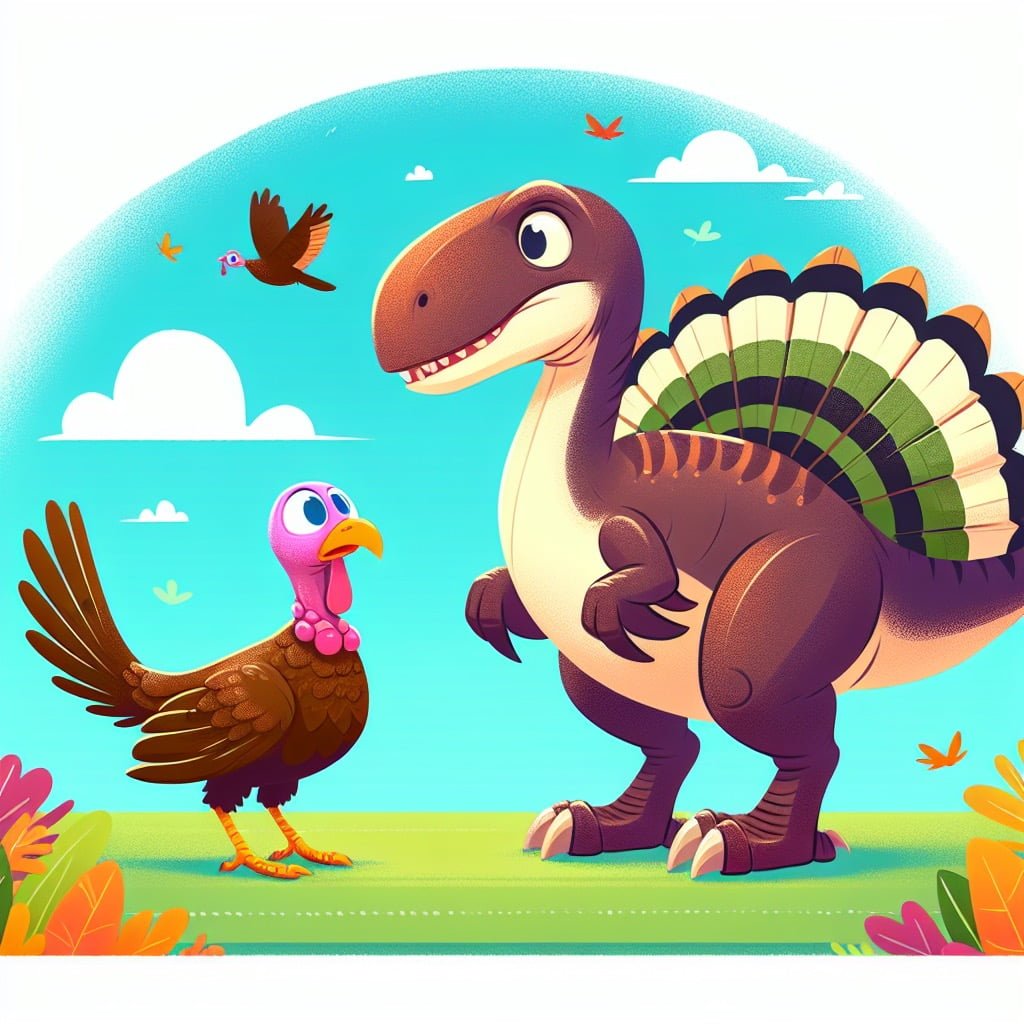
For younger kids: Velociraptors were not as big as the ones in the movies—they were closer to the size of a turkey!
For older kids: Contrary to how they are often portrayed in movies, Velociraptors were actually much smaller than in Jurassic Park, standing at about 2 feet tall and 6 ft long—about the size of a turkey.
Detailed explanation:One of the most popular fun facts for kids about giant dinosaurs is that the Velociraptors were actually about the size of turkeys. While many people may be familiar with Velociraptors being portrayed as large, menacing creatures in movies like Jurassic Park, the truth is that they were much smaller in real life.
Velociraptors belonged to a group of dinosaurs known as dromaeosaurs, which were characterized by their small size, sharp claws, and bird-like features. They were agile predators that likely hunted in packs and used their sharp claws to take down prey.
Despite their relatively small size, Velociraptors were still formidable hunters. They had strong jaws filled with sharp teeth, and their claws were capable of inflicting serious damage. Their speed and agility also made them efficient predators, allowing them to quickly catch their prey.
While Velociraptors may not have been as big as some of the other dinosaurs like the T-Rex or Triceratops, they were still fascinating creatures that played an important role in their ecosystems. Learning about the size of Velociraptors compared to modern-day birds like turkeys can help kids better understand the diversity of dinosaurs and the different shapes and sizes they came in.
In conclusion, while Velociraptors may have been small in size compared to other dinosaurs, they were certainly not to be underestimated. Their size, agility, and hunting skills made them successful predators in their time, and they continue to capture the imagination of kids and adults alike.
Fun Facts for Kids About Giant Dinosaurs
7. The Brachiosaurus Was So Tall, it Ate From Treetops
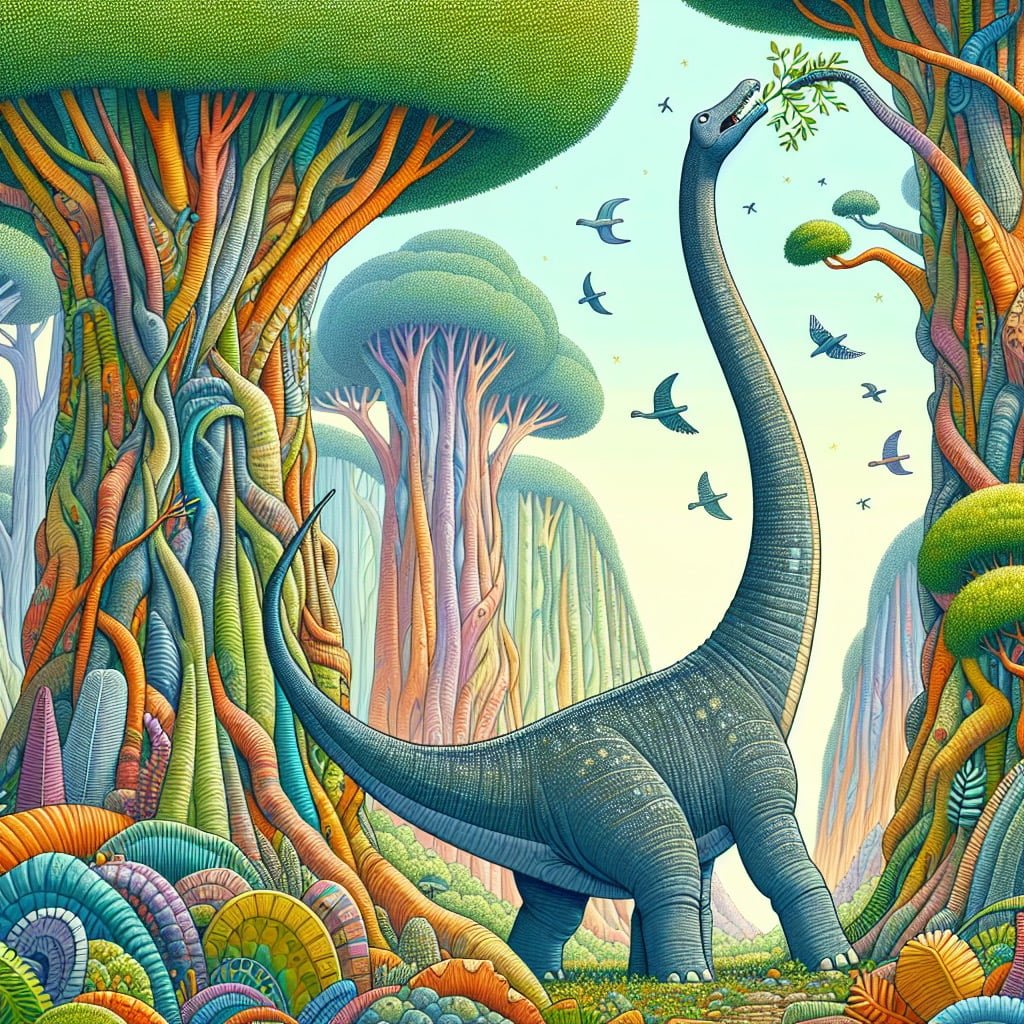
For younger kids: The Brachiosaurus was tall enough to eat leaves from the tops of the tallest trees like a giant giraffe!
For older kids: The Brachiosaurus, with its long neck and front legs, was able to reach the tops of trees up to 40 feet high, effectively making use of its incredible height to access tasty leaves that other dinosaurs couldn’t reach.
Detailed explanation:One of the most fascinating and Fun Facts for Kids About Giant Dinosaurs is the incredible height of the Brachiosaurus. This massive dinosaur, which lived during the Late Jurassic period, was known for its towering height that allowed it to easily reach treetops for food.
The Brachiosaurus was a sauropod dinosaur, characterized by its long neck and tail, as well as its massive body supported by four sturdy legs. Its long neck, in particular, was a remarkable adaptation that allowed the Brachiosaurus to feed on vegetation high above the ground. Some estimates suggest that the Brachiosaurus could reach heights of up to 40-50 feet, making it one of the tallest dinosaurs known to have existed.
This incredible height was crucial for the Brachiosaurus to access the abundant vegetation available in the treetops. By being able to feed on high branches, the Brachiosaurus had a distinct feeding advantage over other herbivorous dinosaurs that were limited to ground-level vegetation. This adaptation allowed the Brachiosaurus to thrive in its environment and grow to immense sizes.
In addition to its height, the Brachiosaurus also had a unique body structure that helped support its massive size. Its lightweight bones, long neck, and tail, as well as its efficient respiratory system, all played a role in allowing the Brachiosaurus to reach such impressive heights and sustain its massive body mass.
Overall, the incredible height of the Brachiosaurus and its ability to feed from treetops are truly remarkable aspects of this giant dinosaur’s biology. These Fun Facts for Kids About Giant Dinosaurs help us appreciate the diversity and adaptations of these fascinating creatures that once roamed the Earth.
Fun Facts for Kids About Giant Dinosaurs
8. Dinosaur Footprints Have Been Found on Every Continent
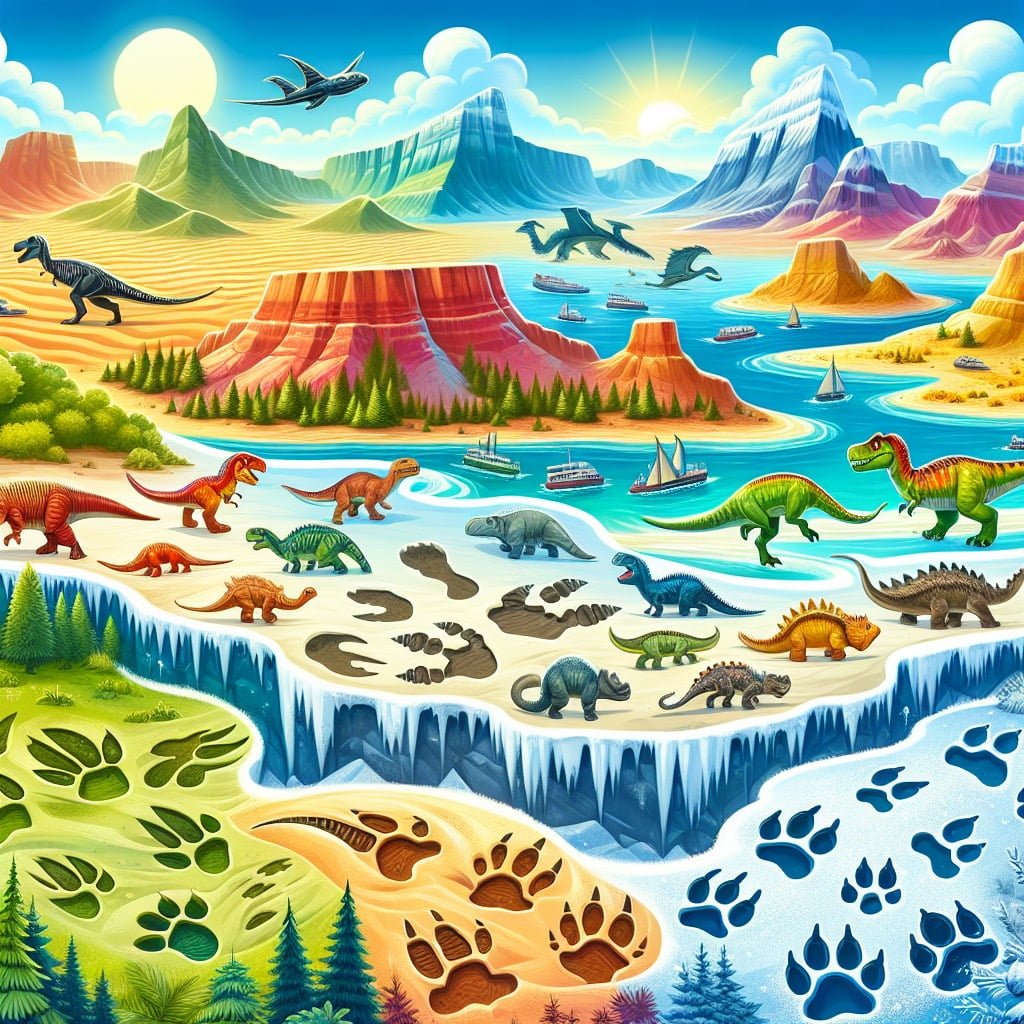
For younger kids: Dinosaur footprints have been found all over the world, from dry deserts to icy mountains!
For older kids: Well-preserved footprints from dinosaurs have been discovered on every continent, providing valuable insights into their habitats, how they moved, and how they interacted with one another.
Detailed explanation:One of the most fascinating Fun Facts for Kids About Giant Dinosaurs is that dinosaur footprints have been discovered on every continent on Earth. These footprints provide invaluable insights into the behavior and movement patterns of these ancient creatures that roamed the planet millions of years ago.
One of the reasons why dinosaur footprints are found on every continent is because during the Mesozoic Era, when dinosaurs lived, the Earth’s landmasses were connected in a supercontinent known as Pangaea. As the continents gradually drifted apart over millions of years, the dinosaur footprints left behind on various landmasses became preserved in sedimentary rocks.
Paleontologists have uncovered dinosaur footprints in diverse environments, from deserts to forests to coastal regions. These footprints vary in size, shape, and depth, providing clues about the different species of dinosaurs that once inhabited these areas. By studying the spacing and arrangement of dinosaur footprints, scientists can also infer information about how dinosaurs moved in groups or alone, and how they interacted with their environment.
In recent years, advances in technology have allowed researchers to create three-dimensional models of dinosaur footprints, further enhancing our understanding of these prehistoric animals. These models can help scientists determine the speed at which dinosaurs were moving, the weight of the creatures that left the footprints, and even their behavior.
Overall, the discovery of dinosaur footprints on every continent is a testament to the global distribution and diversity of these magnificent creatures. It serves as a reminder of the rich history of life on Earth and the importance of preserving and studying these remarkable fossils for future generations to enjoy.
Fun Facts for Kids About Giant Dinosaurs
9. Some Dinosaurs Had Feathers, Not Scales
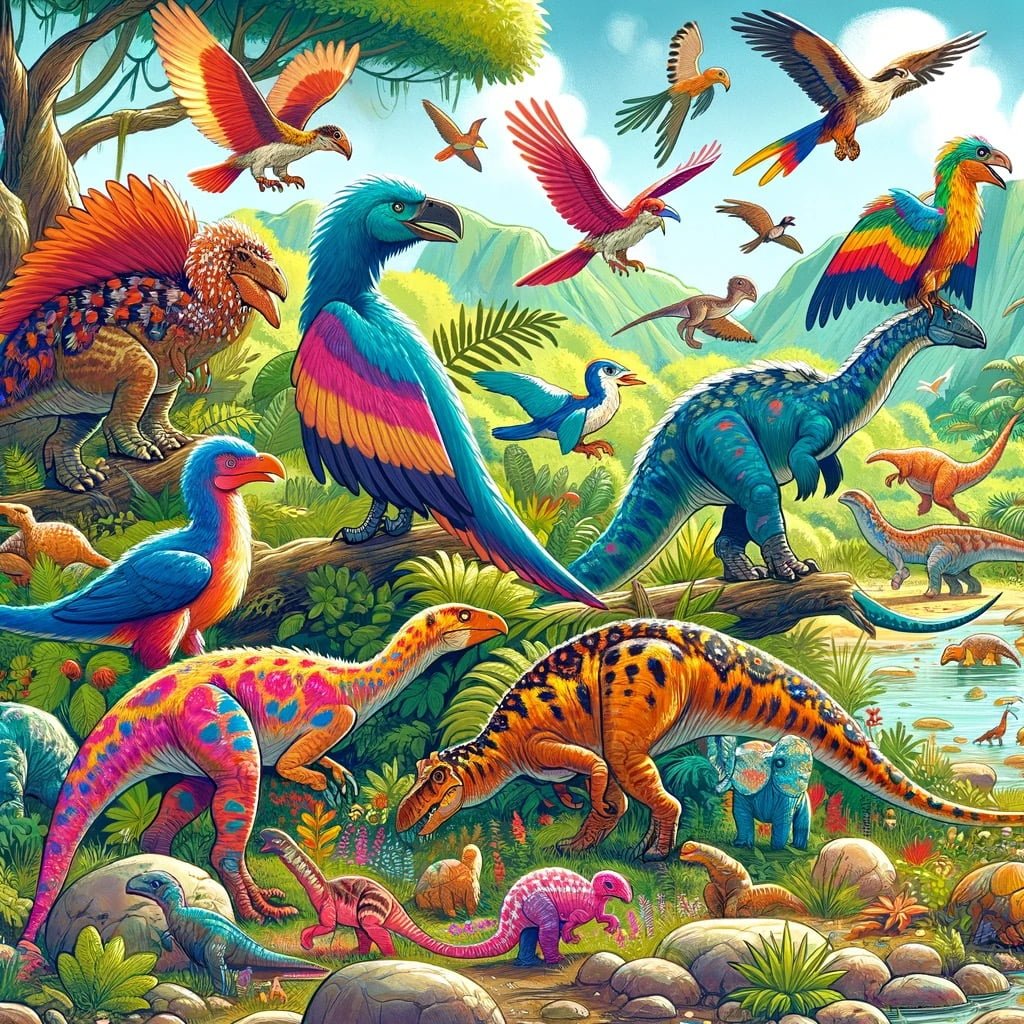
For younger kids: Some dinosaurs had feathers like the ones you see on birds today!
For older kids: The discovery of feathered dinosaurs revolutionized our understanding of these creatures, with many theropod dinosaurs—like the famous Velociraptor—having evidence of feathers, suggesting that they looked quite different from the scaly giants once thought.
Detailed explanation:One of the most fascinating Fun Facts for Kids About Giant Dinosaurs is that some of them actually had feathers instead of scales. This discovery has challenged the traditional view of dinosaurs as scaly, reptilian creatures and has opened up a whole new world of possibilities in our understanding of these ancient animals.
The first evidence of feathers on dinosaurs was found in the late 1990s in China, where fossilized remains of several species showed clear imprints of feathers. These feathered dinosaurs, such as the Sinosauropteryx and the Microraptor, belonged to a group called theropods, which includes the famous Tyrannosaurus rex. It is now believed that many theropod dinosaurs, including some of the largest and most ferocious ones, were covered in feathers.
So why did these dinosaurs have feathers? The prevailing theory is that feathers originally evolved for insulation and display purposes in small, non-flying dinosaurs. Over time, feathers may have been co-opted for flight in some dinosaur lineages, leading to the development of modern birds. This connection between dinosaurs and birds is supported by mounting genetic and fossil evidence.
The presence of feathers on dinosaurs has changed our perception of what these creatures looked like and how they behaved. It is now thought that some dinosaurs may have been more bird-like in their appearance and behavior than previously believed. This discovery has ignited a renewed interest in studying dinosaur evolution and has provided valuable insights into the origins of birds.
In conclusion, the fact that some dinosaurs had feathers instead of scales is a fascinating aspect of paleontology that sheds new light on the diversity and complexity of these prehistoric creatures. It is a reminder that there is still much to learn about the ancient world and the dinosaurs that once ruled it.
Fun Facts for Kids About Giant Dinosaurs
10. There Were Hundreds of Different Dinosaur Species
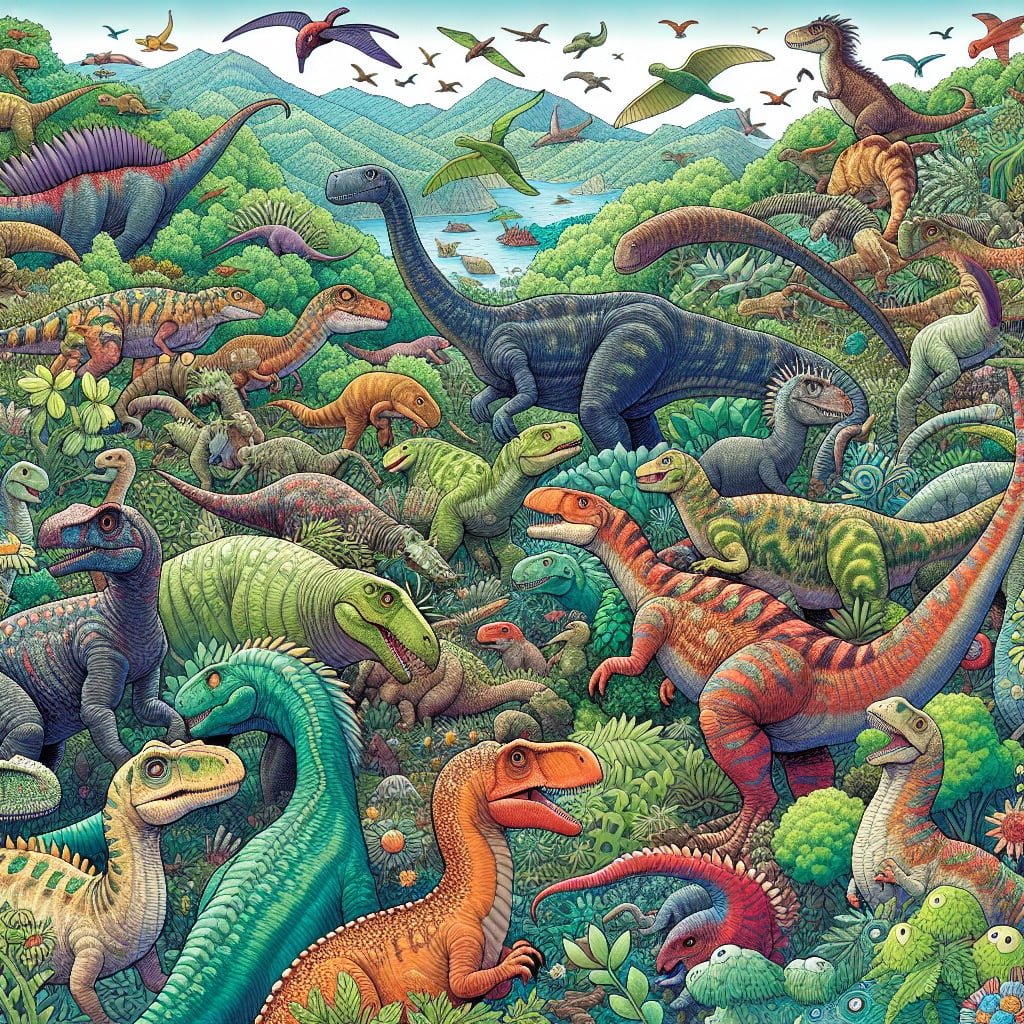
For younger kids: There were so many types of dinosaurs—some were big, some were small, and they all had unique features!
For older kids: Paleontologists have identified and named over 700 different dinosaur species, each with its own distinctive characteristics, making the world of dinosaurs incredibly diverse and complex.
Detailed explanation:One of the most exciting and fascinating fun facts for kids about giant dinosaurs is that there were actually hundreds of different dinosaur species that once roamed the Earth. These incredible creatures came in all shapes and sizes, from the massive, long-necked Brachiosaurus to the tiny, bird-like Microraptor.
Dinosaurs lived during the Mesozoic Era, which lasted for about 180 million years. During this time, dinosaurs evolved and diversified into a wide array of species to adapt to different environments and niches. Some dinosaurs were herbivores, feeding on plants and foliage, while others were carnivores, preying on other animals.
One reason for the vast number of dinosaur species is the fact that the Earth’s continents were arranged differently during the Mesozoic Era. This allowed for different dinosaur populations to become isolated from each other, leading to the development of unique species in different regions. For example, the mighty Tyrannosaurus rex lived in North America, while the Spinosaurus roamed the ancient swamps of northern Africa.
The study of dinosaur species is an ongoing process, with new discoveries being made all the time. Paleontologists use fossil evidence to piece together the evolutionary history of these amazing creatures and to better understand their behavior and biology. By studying the diversity of dinosaur species, scientists can gain valuable insights into the Earth’s ancient ecosystems and how these creatures lived and interacted with each other.
In conclusion, the sheer number and variety of dinosaur species is a testament to the incredible diversity of life that once existed on our planet. Learning about these giant creatures can inspire a sense of wonder and curiosity in kids and adults alike, making the study of dinosaurs a truly fun and fascinating topic.
Did You Know?
Giant Dinosaurs were not only enormous but also incredibly diverse, with a vast range of shapes, sizes, and adaptations that allowed them to thrive in different environments across the planet.
Summary of Fun Facts for Children About Enormous Dinosaurs
Embark on an exciting journey into the world of Giant Dinosaurs with fascinating fun facts that will ignite your curiosity and capture your imagination! Delve into the incredible stories of these larger than life creatures that once roamed the Earth millions of years ago.
Discover astonishing facts like how the Argentinosaurus, the largest dinosaur ever found, could reach an astounding 100 feet in length and weigh up to 100 tons. Uncover the truth about the Velociraptor, which was actually the size of a turkey and not the towering predator portrayed in Jurassic Park.
Through exploring the world of Giant Dinosaurs, you will not only learn about their sizes and shapes but also gain insight into their behaviors, diets, and interactions with their environment. Witness the rich diversity of life that once flourished on our planet and gain a deeper appreciation for the natural world around us.
Whether you’re a budding paleontologist or a curious kid with a passion for learning, there is so much to uncover and learn about in the world of Giant Dinosaurs. So grab your curiosity and join us as we unravel the endless wonders that these magnificent creatures have to offer. Let’s ignite your sense of wonder and embark on a thrilling adventure through the amazing world of Giant Dinosaurs!
Sources and additional information for Fun Facts for Kids About Giant Dinosaurs
WikipediaBritannicaSmithsonian National Museum of Natural History – DinosaursAmerican Museum of Natural History – DinosaursThe Dinosaur DatabaseThe Paleobiology DatabaseDinosaur National Monument (U.S. National Park Service)Jurassic Park InstituteBerkeley University of California – Understanding EvolutionDinosaurs – The Australian MuseumBBC Earth – DinosaursSmithsonian InstitutionNatural History MuseumAmerican Museum of Natural HistoryDinoLand UCMPThe Dinosaur MuseumBBC NatureDiscovery ChannelNational Science FoundationPaleontological Society
